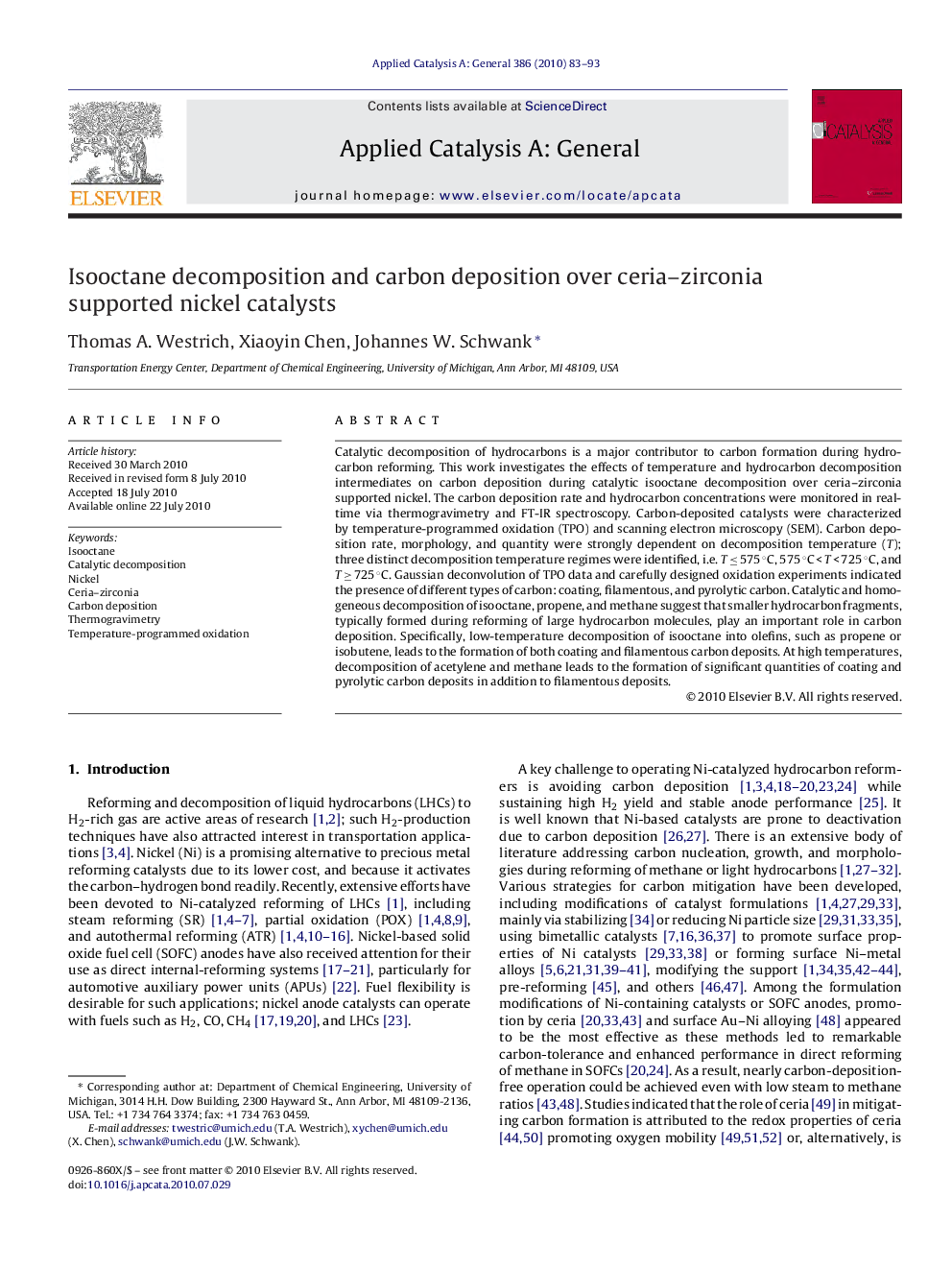| کد مقاله | کد نشریه | سال انتشار | مقاله انگلیسی | نسخه تمام متن |
|---|---|---|---|---|
| 41910 | 45904 | 2010 | 11 صفحه PDF | دانلود رایگان |

Catalytic decomposition of hydrocarbons is a major contributor to carbon formation during hydrocarbon reforming. This work investigates the effects of temperature and hydrocarbon decomposition intermediates on carbon deposition during catalytic isooctane decomposition over ceria–zirconia supported nickel. The carbon deposition rate and hydrocarbon concentrations were monitored in real-time via thermogravimetry and FT-IR spectroscopy. Carbon-deposited catalysts were characterized by temperature-programmed oxidation (TPO) and scanning electron microscopy (SEM). Carbon deposition rate, morphology, and quantity were strongly dependent on decomposition temperature (T); three distinct decomposition temperature regimes were identified, i.e. T ≤ 575 °C, 575 °C < T < 725 °C, and T ≥ 725 °C. Gaussian deconvolution of TPO data and carefully designed oxidation experiments indicated the presence of different types of carbon: coating, filamentous, and pyrolytic carbon. Catalytic and homogeneous decomposition of isooctane, propene, and methane suggest that smaller hydrocarbon fragments, typically formed during reforming of large hydrocarbon molecules, play an important role in carbon deposition. Specifically, low-temperature decomposition of isooctane into olefins, such as propene or isobutene, leads to the formation of both coating and filamentous carbon deposits. At high temperatures, decomposition of acetylene and methane leads to the formation of significant quantities of coating and pyrolytic carbon deposits in addition to filamentous deposits.
Figure optionsDownload high-quality image (80 K)Download as PowerPoint slideResearch highlights▶ Isooctane decomposition over Ni/CZO catalysts results in the formation of four morphologies of deposited carbon, as witnessed by SEM and TGA/TPO. ▶ Three regimes of decomposition temperature were found in which carbon growth rates and its resultant morphologies were distinctly different. ▶ Carbon deposition during isooctane decomposition is most likely due to the decomposition of isooctane pyrolysis products, such as isobutene and propene.
Journal: Applied Catalysis A: General - Volume 386, Issues 1–2, 30 September 2010, Pages 83–93